Abstract
OBJECTIVES. This study examined long-term trends and differences in infant mortality in the United States from 1950 through 1991 according to race and ethnicity, education, family income, and cause of death. Forecasts are made through the year 2010. METHODS. Log-linear regression models were applied to data from the National Vital Statistics System, National Linked Birth and Infant Death files, the National Maternal and Infant Health Survey, the National Natality Survey, and the National Infant Mortality Survey to model and forecast infant mortality. RESULTS. Dramatic declines in the US infant mortality rate have occurred in the past 4 decades, largely as a result of declines in mortality from pneumonia and influenza, respiratory distress syndrome, prematurity and low birthweight, congenital anomalies, and accidents. Despite the overall reductions, however, substantial racial/ethnic, educational, and income differences in infant mortality still exist. CONCLUSIONS. The long-term downward trend in US infant mortality has not benefited Blacks and Whites equally. The Black/White disparity in infant mortality has not only persisted but increased over time and is not expected to diminish in the near future. Educational inequalities have also widened, and racial disparities have generally increased across all educational levels.
Full text
PDF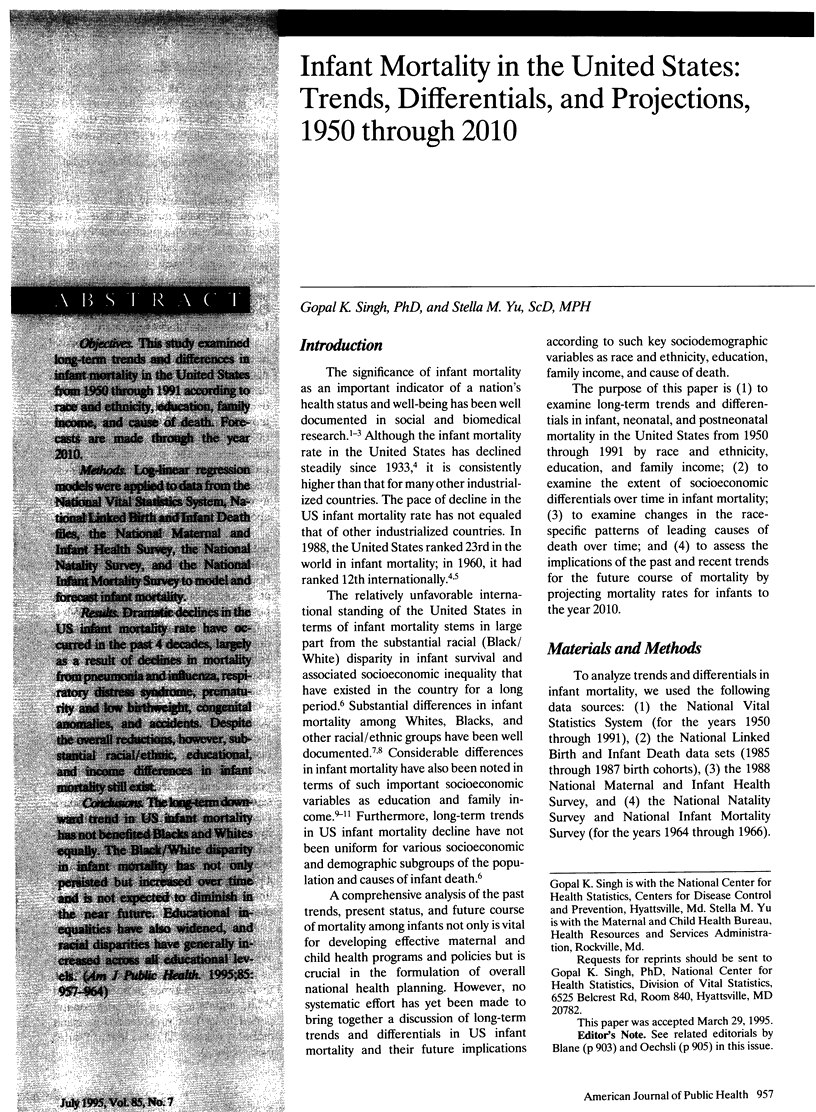
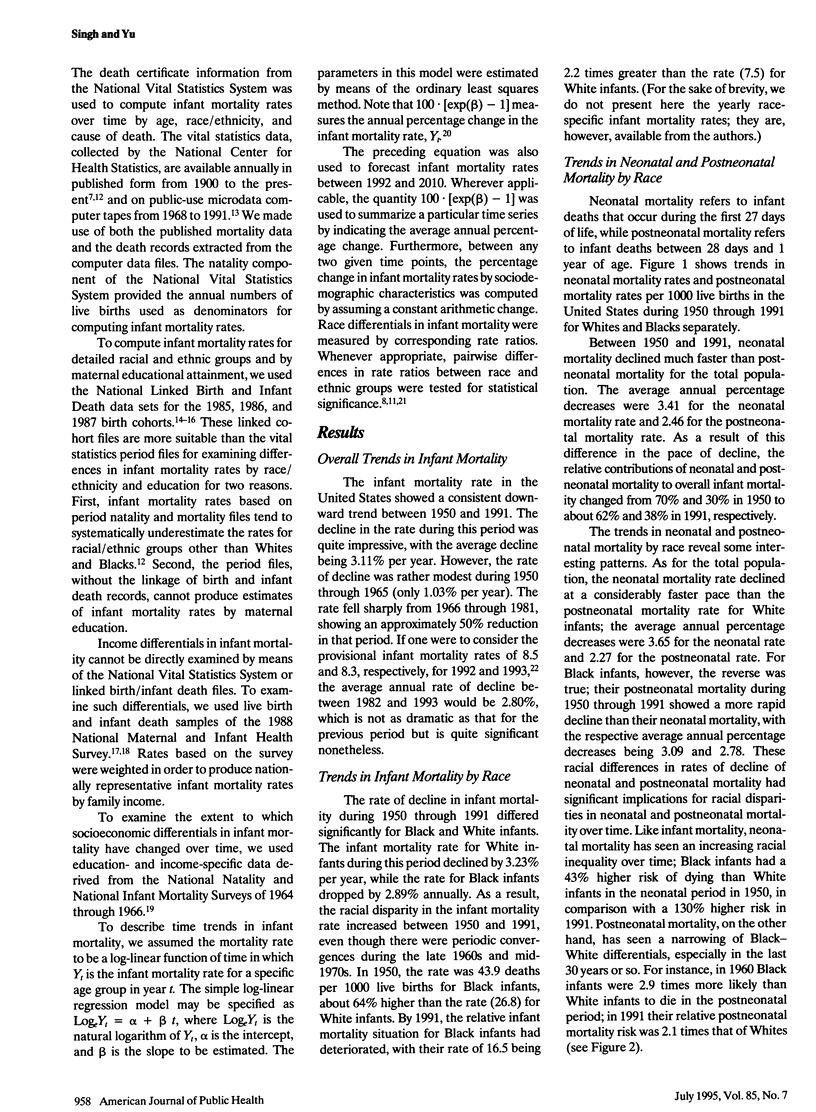
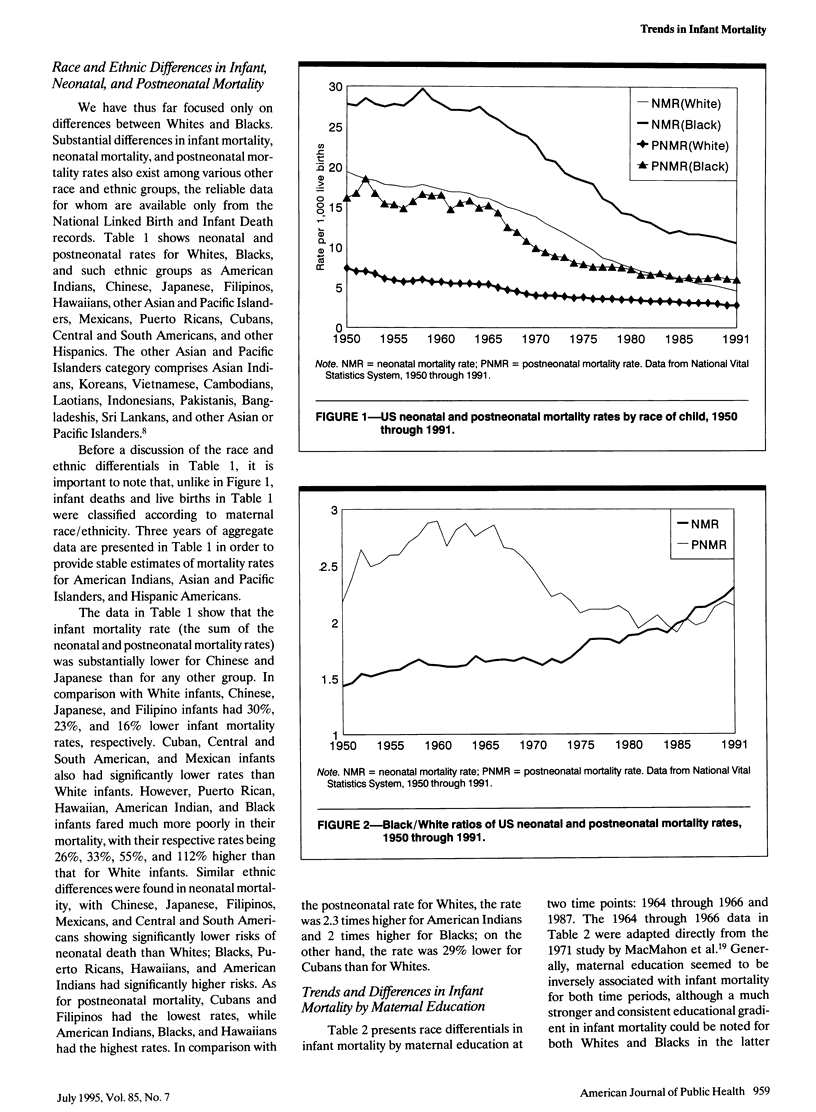
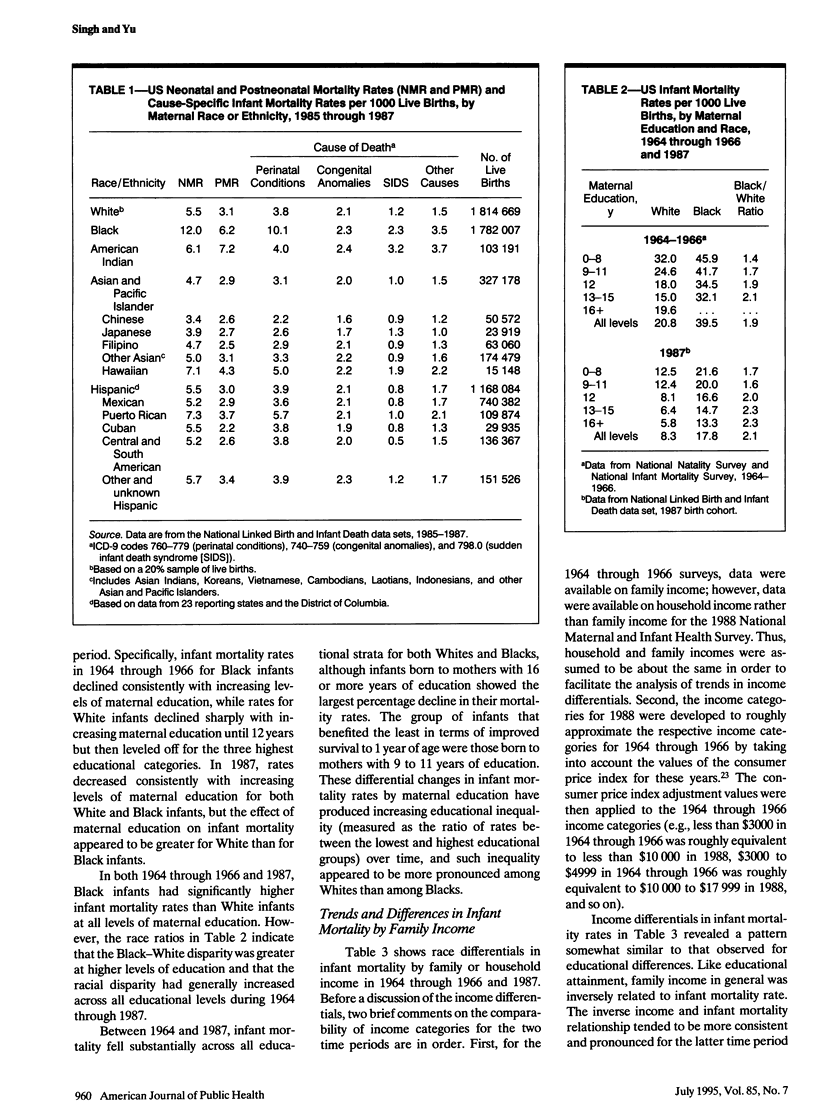
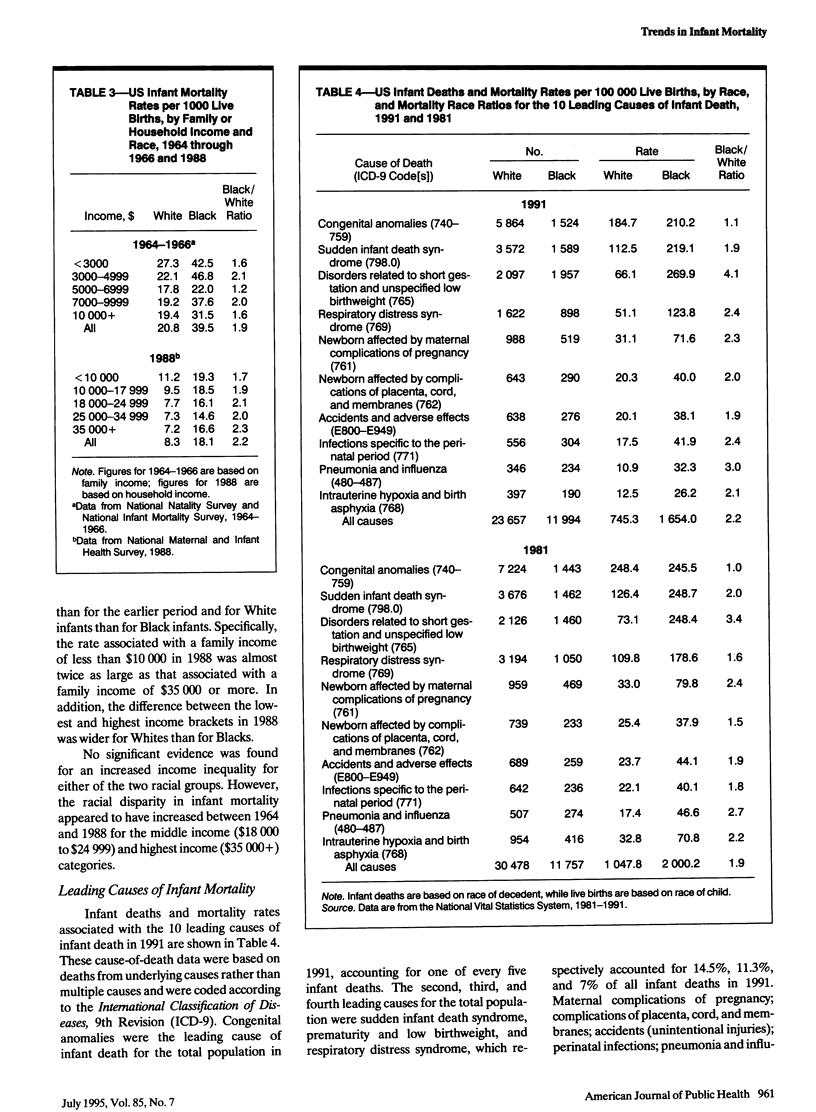
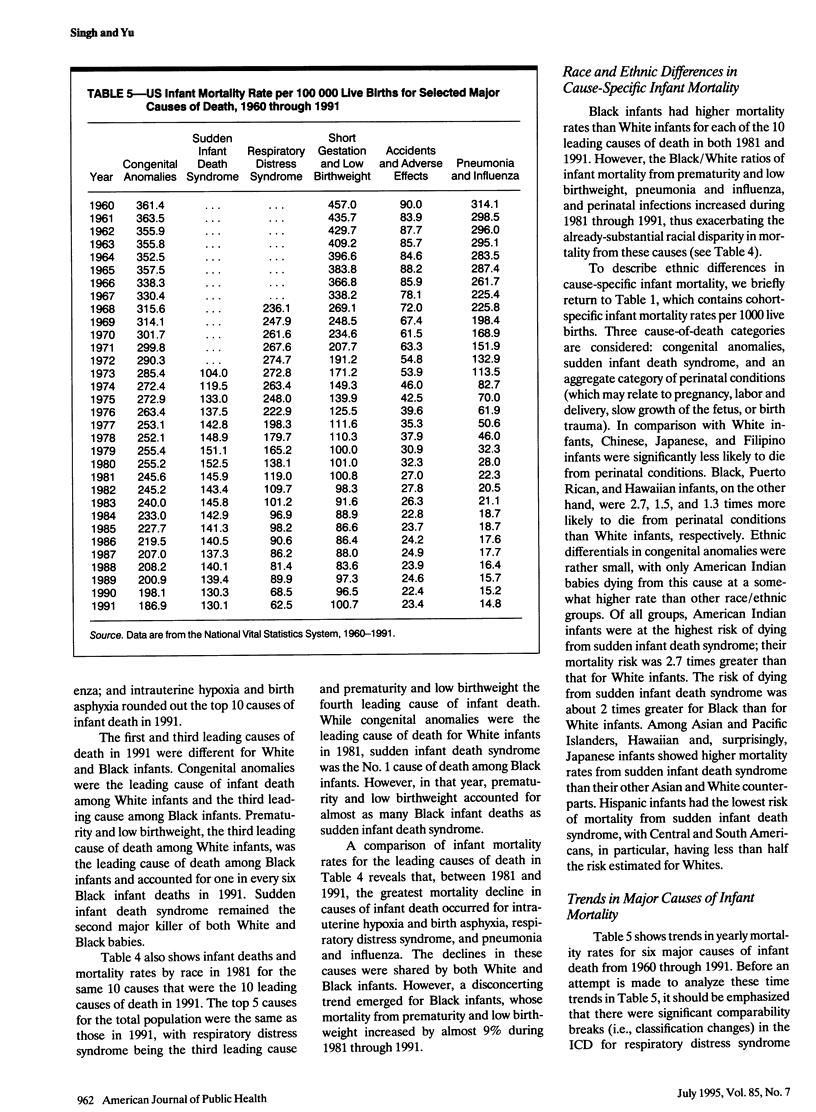
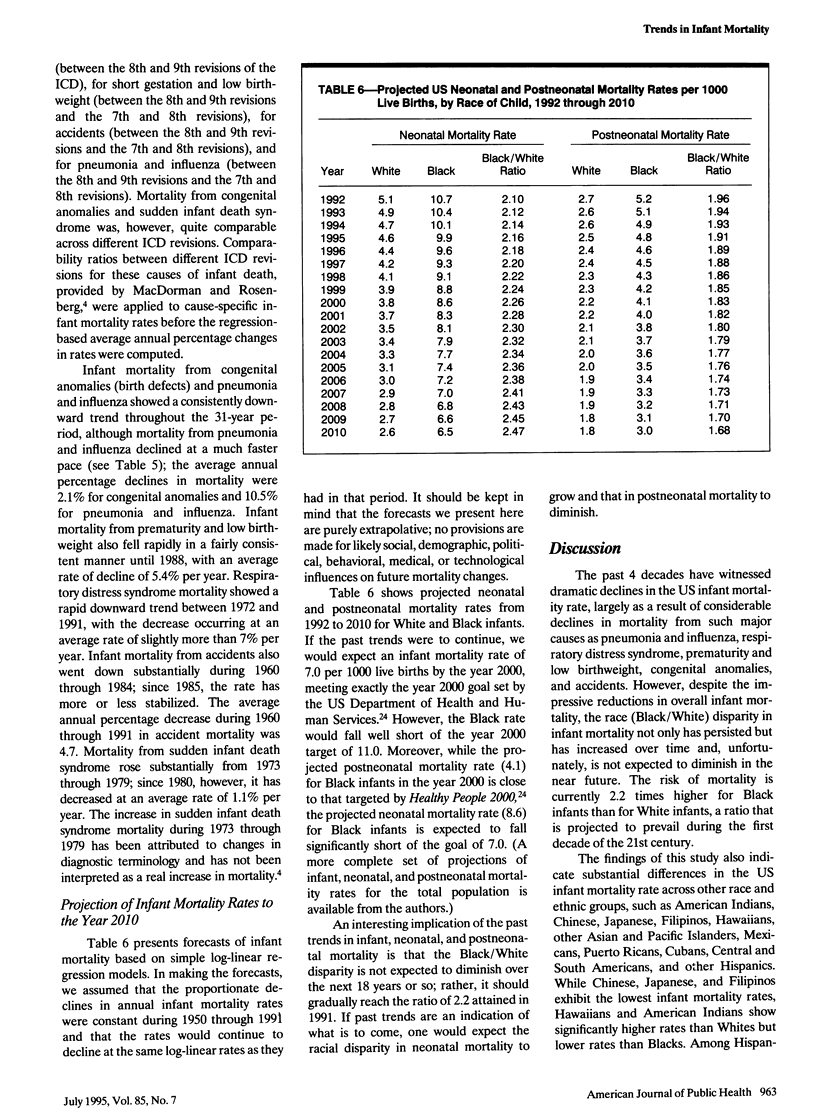
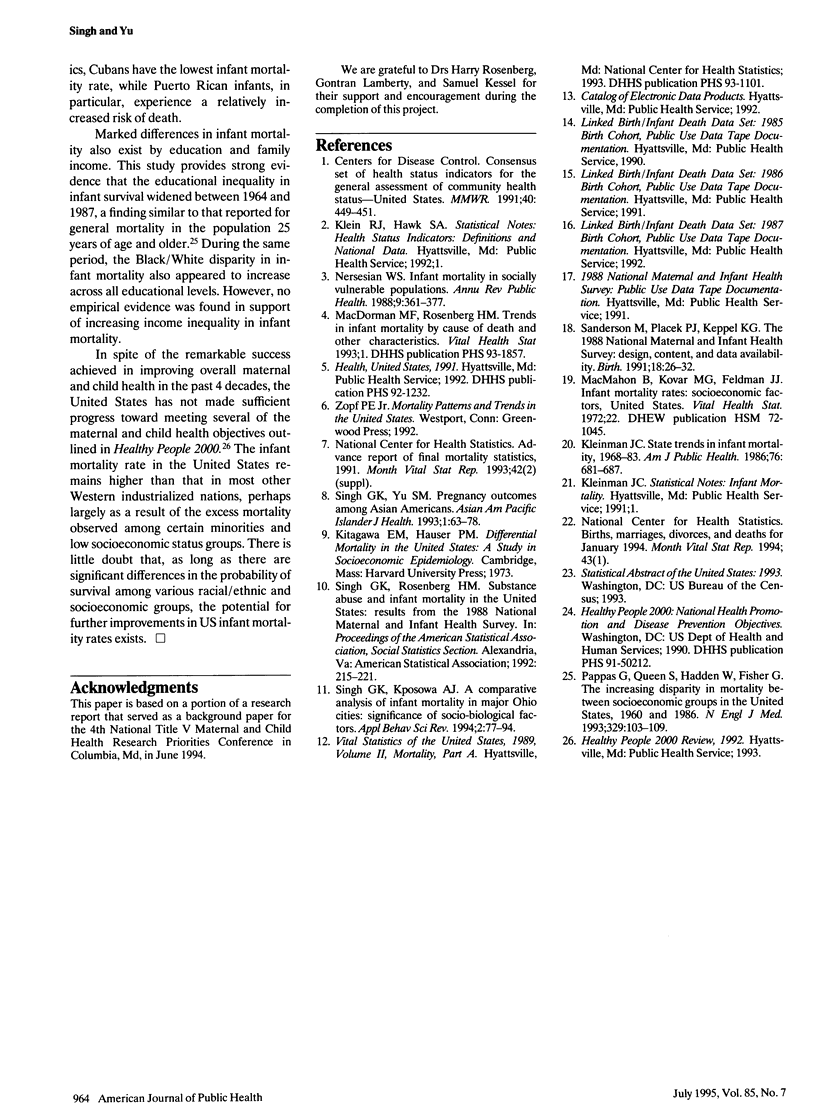
Selected References
These references are in PubMed. This may not be the complete list of references from this article.
- Kleinman J. C. State trends in infant mortality, 1968-83. Am J Public Health. 1986 Jun;76(6):681–688. doi: 10.2105/ajph.76.6.681. [DOI] [PMC free article] [PubMed] [Google Scholar]
- Nersesian W. S. Infant mortality in socially vulnerable populations. Annu Rev Public Health. 1988;9:361–377. doi: 10.1146/annurev.pu.09.050188.002045. [DOI] [PubMed] [Google Scholar]
- Pappas G., Queen S., Hadden W., Fisher G. The increasing disparity in mortality between socioeconomic groups in the United States, 1960 and 1986. N Engl J Med. 1993 Jul 8;329(2):103–109. doi: 10.1056/NEJM199307083290207. [DOI] [PubMed] [Google Scholar]
- Sanderson M., Placek P. J., Keppel K. G. The 1988 National Maternal and Infant Health Survey: design, content, and data availability. Birth. 1991 Mar;18(1):26–32. doi: 10.1111/j.1523-536x.1991.tb00050.x. [DOI] [PubMed] [Google Scholar]
- Singh G. K., Kposowa A. J. A comparative analysis of infant mortality in major Ohio cities: significance of socio-biological factors. Appl Behav Sci Rev. 1994;2(1):77–94. doi: 10.1016/1068-8595(94)90022-1. [DOI] [PubMed] [Google Scholar]
- Singh Gopal K., Yu Stella M. Pregnancy Outcomes Among Asian Americans. Asian Am Pac Isl J Health. 1993 Summer;1(1):63–78. [PubMed] [Google Scholar]


